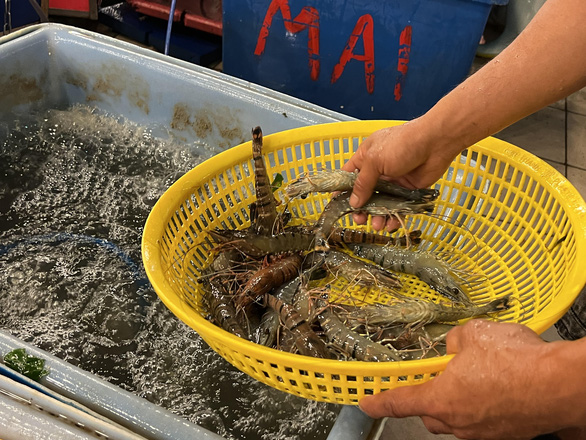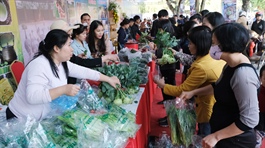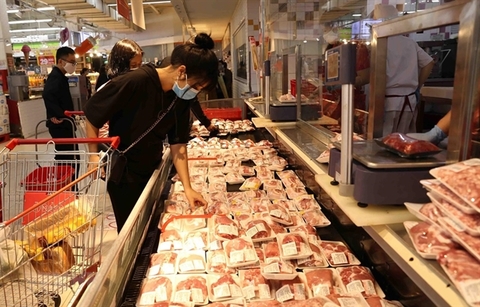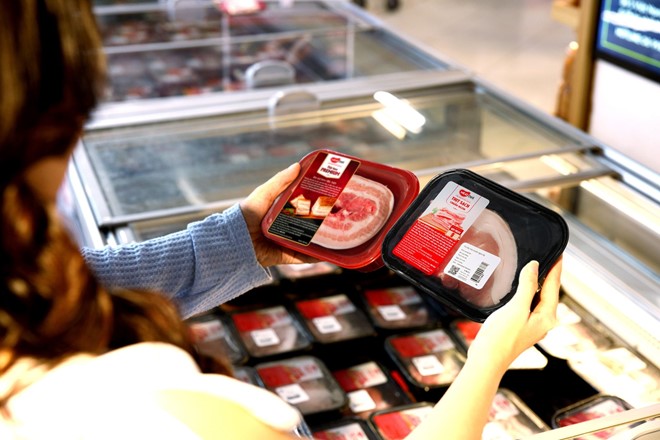Vietnam’s seafood exports to EU increasingly shrink due to ‘yellow card’
Vietnam’s seafood exports to EU increasingly shrink due to ‘yellow card’
Despite an increase in the value of Vietnam’s seafood exports to the European Union (EU), the position of the bloc in the Vietnamese seafood export picture has gradually faded as the former’s ‘yellow card’ remains in place five years later, according to the Vietnam Association of Seafood Exporters and Producers (VASEP).

The association made the statement prior to an inspection by a delegation of the EU into Vietnam’s efforts to follow its recommendations to have the ‘yellow card’ lifted.
The ‘yellow card’ is a kind of warning issued by the European Commission (EC) to countries involved in illegal unreported and unregulated (IUU) fishing.
According to statistics from the General Department of Vietnam Customs, the 27-member EU accounts for 12 percent of Vietnam’s seafood export value, ranking fourth after the U.S., Japan, mainland China, and Hong Kong.
As of the third quarter of this year, Vietnam’s seafood exports to the EU market has reached US$1 billion, surging 40 percent year on year.
However, caught seafood exports made up only 26 percent of Vietnam’s total value of seafood shipments to the EU, up 29 percent.
According to VASEP, in such a challenging year as this year with the Russia-Ukraine military conflict, inflation, and currency devaluation, local seafood enterprises have been hurt as the ‘yellow card’ has not been removed.
The ‘yellow card’ causes a negative impact on Vietnam’s seafood sector, but the impact has been more severe since the Russia-Ukraine military conflict erupted, which sent fuel prices soaring.
As a result, fishermen in coastal provinces find it hard to go out to sea.
In addition, the export of caught seafood to the EU has faced multiple obstacles due to the requirements in administrative procedures, VASEP stated.
By the end of September, Vietnam had earned more than $3.4 billion from caught seafood exports, increasing 40 percent over the same period last year.
Japan was the largest buyer of Vietnam’s caught seafood, followed by the U.S., China, and South Korea.
Meanwhile, the EU market accounted for the smallest proportion of Vietnam’s caught seafood exports, including tuna, squid, octopus, scallop, cod, and sentinel crab, at eight percent.
Another reason is that the EU and many other markets, such as the U.S. and Japan, are facing inflation.
In the last months of the year, the prices of many commodities have increased, so consumers have to tighten their budgets.
As a result, Vietnam has seen a slowdown in seafood exports to the EU, and many orders have been suspended.
According to VASEP, Vietnam expects to export $2.3 billion worth of seafood in the last quarter of the year. The $10-billion target is expected to be reached at the end of November.
The seafood export revenue from the EU is forecast to hit $1.3 billion this year.
The EC imposed the ‘yellow card’ punishment on Vietnam’s seafood for failing to meet relevant requirements on anti-IUU in 2017. It means that all of Vietnam’s seafood batches shipped to the EU are subject to scrutiny, or local exporters have to pay higher costs.
If significant progress is made, the ‘yellow card’ will be lifted and replaced with a ‘green card,’ representing legal export status.
Otherwise, a ‘red card’ will be given, meaning that Vietnam will be banned from exporting its seafood to the EU.
























